Book Review - Daniel the Miracle Beagle, (2012, Non-Fiction)
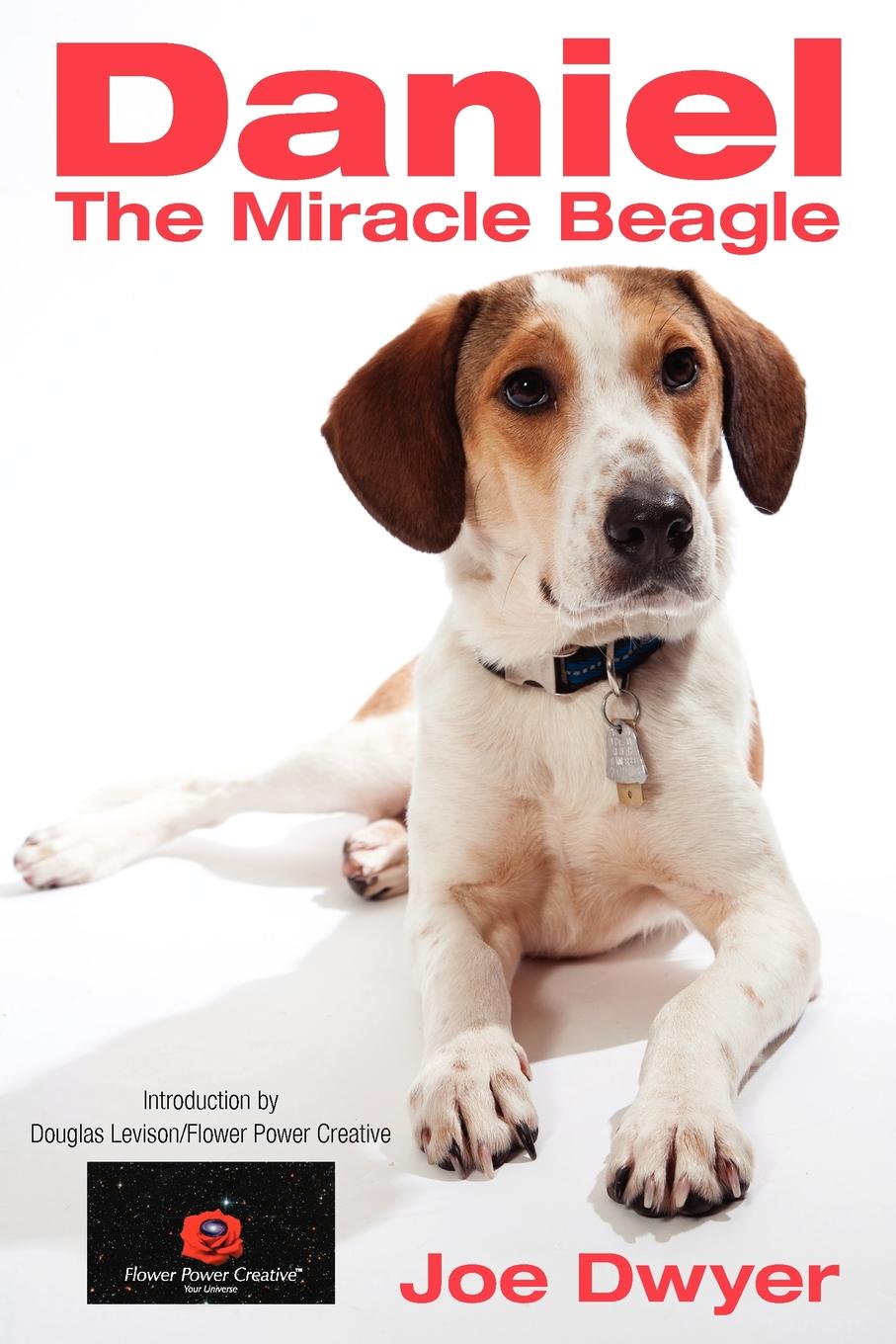
Non-Fiction Book
![]()
![]()
![]()
![]()
![]() PAWS UP
PAWS UP
On October 3rd, 2011, Daniel, a beautiful young 20 pound Beagle dog from an Alabama Animal Shelter, along with 18 other dogs whom had arrived just four days earlier, were walked down a special corridor to be leave the world forever as the shelter’s policy dictated that their time was up. Miraculously, after nearly a half hour of breathing in lethal levels of carbon monoxide gas pumped into the small gas chamber Daniel now found himself in, he had somehow survived.
Told from Daniel’s point of view, the book gives us a glimpse of a tiny life worth living that has changed the world in a very large way. People’s hearts, minds, and even laws in over 31 states to date have been influenced by Daniel. He is now on a mission to tell others how important life is and how it should be respected. Daniel tells us that too often many special lives, such as Daniel’s, are forgotten or simply brushed aside, all because a human is too busy. The consequence of this attitude by humans for dogs like Daniel, unfortunately, is one of life or death.
Daniel’s Story is an easily accessible quick read that can be done in one sitting. It appeals to all ages and reading levels, written concisely and fluidly. Even those whom do not like to read often, or, tend to struggle with distraction, will be able to quickly finish this book due to its small size and simple layout. Overall, Daniel the Miracle Beagle is a wonderful little read about a very important issue that can easily be changed through awareness. Daniel’s unique first person narration of his life and work are an inspiration and should not be missed.
Reviewed by staff writer Paul Coyle
Movie Review – The Witness, (2000, DVD)
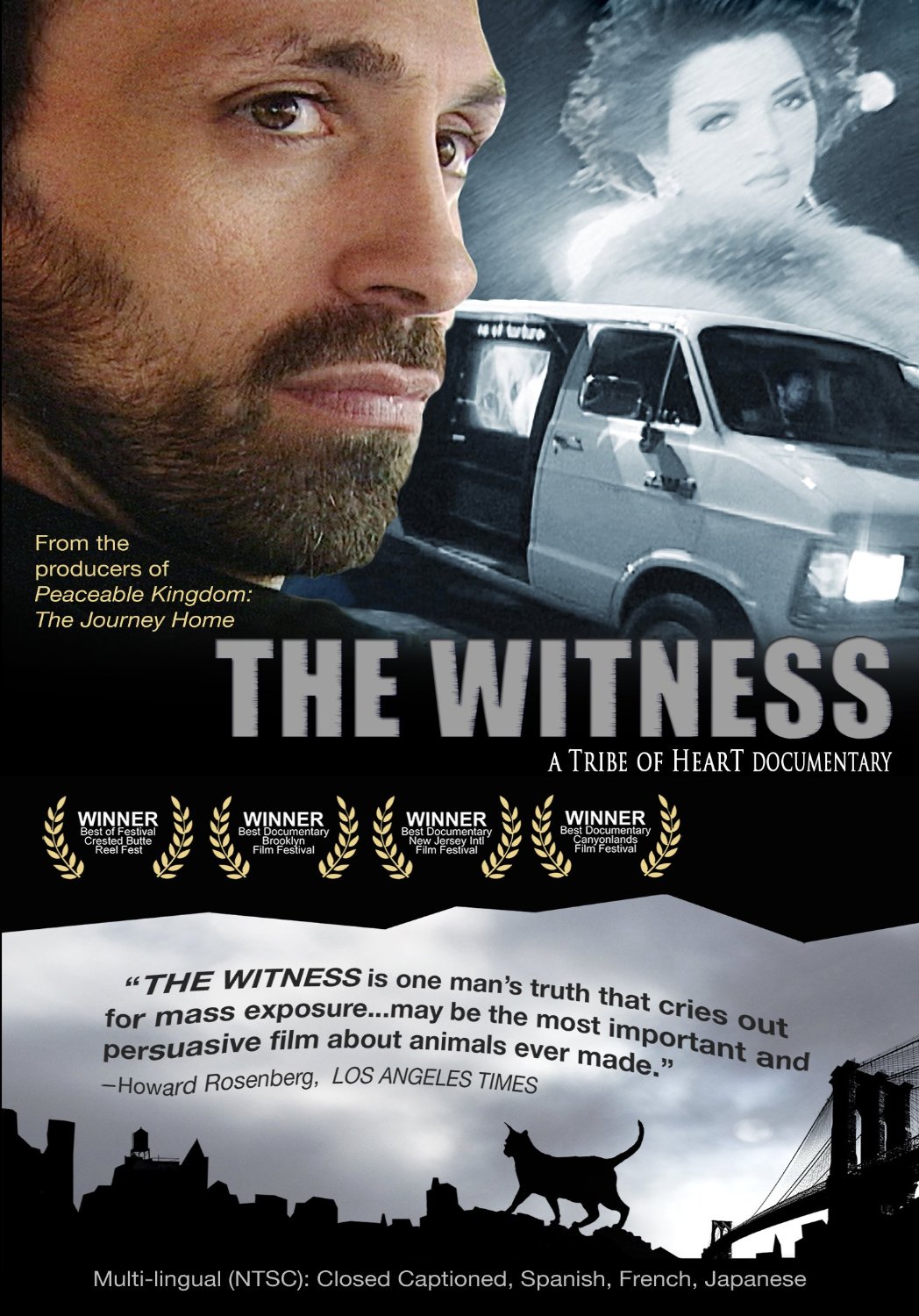
Documentary Film
![]()
![]()
![]()
![]()
![]() PAWS UP
PAWS UP
The Witness, by activist and film maker Eddie Lama, is an exploration of one man’s transcendence from a selfish life of cruelty and apathy, toward a selfless meaningful existence filled with redemption, empathy, and humane activism of the highest moral standards. Former construction worker and alcoholic turned anti-fur activist Eddie Lama, opens up the door to his life (and multimedia educational van), to bring the audience along to become a witness to the reality of the fur trade industry. Rather then showing graphic images one would typically associate with organizations such as Peta, or with secret footage obtained by undercover investigations of harsh human acts of violence, the film instead connects the viewer to the man behind the activism on a personal level. You come away feeling, “this is a guy I can relate too, If he can do something, perhaps I can do something to make the world a better place.”
At 45 minutes long, the film documents, through a series of interviews and well reasoned arguments, Lama’s personal journey into activism. By opening his heart and speaking candidly, one could even say spiritually, we are able to hear Eddie in his own words describe the birth, growth, and ultimate maturation of a concept as abstract and important as empathy. Unique to this film is Lama’s technique of activism, literally using a vehicle to expose everyday New Yorkers to see, hear, and bear witness to the cruelty of the fur trade.
This movie merits 4 stars for originality of activism and the unique approach taken to connect with viewers, by sharing Eddie’s difficult and meaningful journey of self discovery, ultimately birthing the moral ideal of “empathy” in one man whom had never known or cared about it before.
Reviewed by staff writer Paul Coyle
Movie Review – Dave Vs. Monsanto, (2011, DVD)
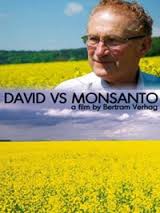
Documentary Film
![]()
![]()
![]()
![]()
![]() PAWS UP
PAWS UP
An interesting release from Canada transcending international borders to bring awareness to a common problem faced by traditional farmers in the United States and worldwide, Dave Vs. Monsanto is an important documentary film capturing the struggle of independent farmers to retain their traditional farms and farming practices in an age of multinational corporations. In the film, companies such as Monsanto and Dupont, are increasingly employing heavy handed aggressive tactics to gain complete dominance of worldwide food production and control the future of food supply.
At the center of the story is the issue of GMO seeds (genetically modified organisms), which are claimed to be drought resistant, pest resistant, and higher yielding, while opponents to GMO crops claim exactly the opposite is the reality of this type of tinkering with our food supply that contradicts thousands of years of evolution and natural development, leaving us with less nourishing and more problematic consequences for mass food production.
Dave vs. Monsanto is a sobering, eye opening film that is highly educational, touching both sides of the genetically modified food debate. We hear first hand from farmers the dangers of using GMO seeds and the corporate interests forcing traditional farmers with some of the highest quality and most nutritional food out of business through lawsuits and intimidation. Farmers claim what mother nature has developed over thousands of years is being altered by genetic modification and diminishing the resistance and quality of the current foods, taking away our choice and ability to have access to very healthy, nutritional, and safe fruits and vegetables.
Reviewed by staff writer Paul Coyle
Movie Review – The Hunter, (2011, DVD)
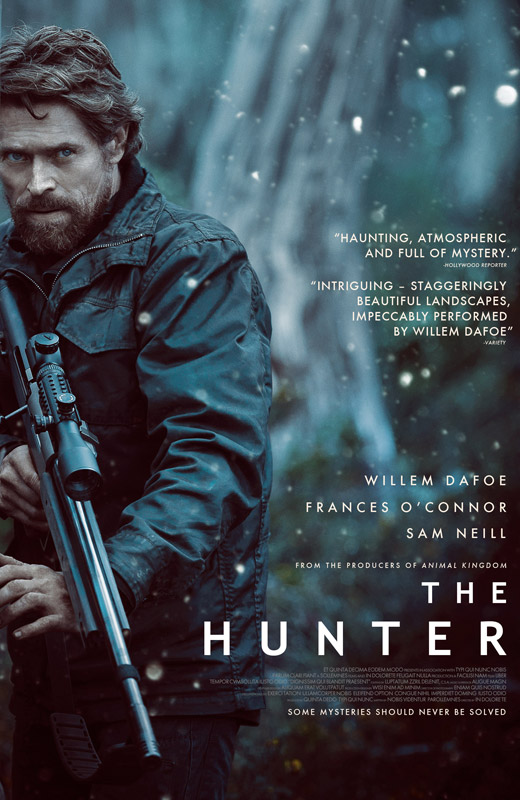
Feature Film
![]()
![]()
![]()
![]()
![]() PAWS UP
PAWS UP
Brilliant acting by Willem Dafoe and extraordinary scenery of rarely filmed native Tasmania, highlight this film by Australian director Daniel Nettheim. Redleaf, a top secret biotechnology firm, clandestinely hires the services of mercenary and world class hunter, Martin, played by Dafoe, to kill, acquire biological samples and destroy any trace of the last known Thylacine, commonly known as the Tasmanian Tiger, which was previously believed to have been extinct since 1933.
Martin, somewhat of a loner and simple man, travels alone to Tasmania to begin the task. Posing as a conservation researcher from a London University, he arrives at a remote lodge owned by Lucy Armstrong and her two children. While settling in and preparing the hunt, he learns that Lucy’s husband has been missing, leaving her distraught and heavily medicated, unable to maintain the lodge which has become dirty and unkept, no longer with a working generator for electricity. Requiring power for his high tech equipment and more suitable accommodations, he heads into town to gather supplies and report to Redleaf. While there, Martin is harassed by local loggers, whom view him as a “Greenie” threat to their livelihood and refuse to rent him any rooms, thus leaving the dirty, powerless lodge as his only option. Returning to town as needed to fix the generator, he constantly harassed and delayed by logging unions in his pursuit of the Tiger.
During the days that follow, Martin finally is able to begin the hunt and spends the majority of his time in the wilderness, seeking out any trace of the Tasmanian Tiger. Returning to resupply at the lodge and report to Redleaf every few weeks, he starts to clean up the lodge and learns more about the mysterious disappearance of the father of the household, along with his research into the Tasmanian Tiger. Martin begins to take an interest in the family, despite his personal reservations to human attachments and desire to live a simple life of solitude.
Throughout the time coming back and forth from the lodge, conflicts escalate with the locals and Martin finds himself pressured by Redleaf to produce results. Stepping up his efforts, he puts aside his feelings for the family to complete his mission. Eventually, he locates the last Tiger and begins to track it. During this time in which Martin is alone for extended times in the wilderness, his thoughts turn toward the family back at the lodge, the missing father, and the philosophy of human nature discussed with Lucy Armstrong and her environmentalist anti-logging friends he had met in previous trips to the lodge. Clearly closing in on the Tiger, there is a scene where he says to himself, “I wonder if she is the last one, hunting and killing, just waiting to die.” He is relating his own existence of loneliness and isolation that comes with the nature of his mercenary work to that of the last Tiger, a hunter herself in a world that she doesn’t seem to belong in or fit into very well. She has no remaining connections to her kind, a sad and hopeless future just like Martin.
Wanting results at any costs, Redleaf steps up its efforts to procure what it wants, creating more problems for Martin and leading up to an incredibly powerful ending that makes one ponder what it means to be human with our power, responsibility, and moral duty towards sentient beings known as the animals we share the world with. It begs the questions, “at what cost do we wish to exploit and control the fate of nature and living creatures, are we making those decisions and taking appropriate actions for the right reasons?”
With a hauntingly beautiful soundtrack and outstanding cinematography of rarely seen native Tasmania wilderness, the Hunter is a deeply moving, highly reverent, suspenseful movie that is flawlessly executed. Rated 5 stars all around for excellent cinematography, directing, acting, and drama...a must see, one of a kind film.
Reviewed by staff writer Paul Coyle
Movie Review – Milk?, (2012, DVD)
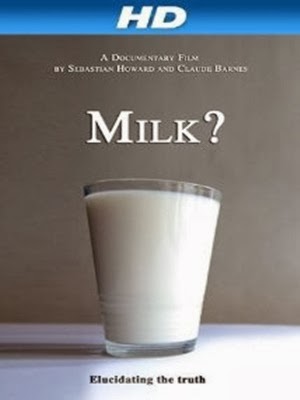
Documentary Film
![]()
![]()
![]()
![]()
![]() PAWS UP
PAWS UP
Milk, from director Sebastian Howard, is a documentary film that attempts to reveal information to answer the questions, “is milk safe to consume and actually healthy for us as humans?” Through a series of interviews with farmers, health experts, critics, doctors, and industry representatives, both sides of the debate are presented. Offering top level opinions, leaving the viewer with no definitive facts or answers to the initial question, the film does not take sides and simply presents a series of statements which are not necessarily educational. One noteworthy part of the film includes a segment about a raw milk farmer whom faces a lengthy legal battle to be able to supply his customers, whom feel processed milk de voids the substance of all its nutritional value, with the option to purchase his raw farm fresh cow and goat milk. This introduction to the benefits and dangers of raw milk was quite interesting.
The film essentially presents multiple sides of the issue in a very neutral and subtle manner. It is lacking of any convincing arguments to the health benefits or lack thereof from human consumption of milk. One paw up for raising an important issue to highlight the debate of the health benefits of Milk.
Reviewed by staff writer Paul Coyle
Movie Review – War Dogs of the Pacific, (2009, DVD)
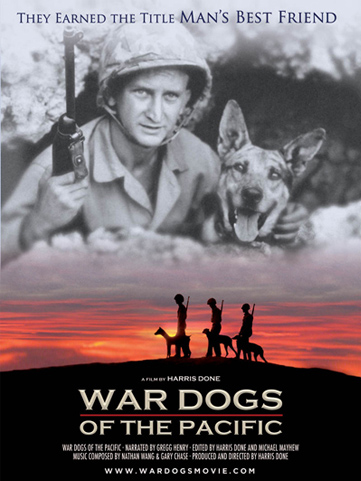
Documentary Film
![]()
![]()
![]()
![]()
![]() PAWS UP
PAWS UP
This short 46 minute film from director Harris Done, whom also recently released Always Faithful (2013), a film about the war dogs of Iraq and Afghanistan, comes an outstanding, highly educational, and inspiring movie about the young men and dogs whom trained, lived, worked, and fought in Combat Marine war dog platoons of World War Two.
Told from firsthand accounts of the veterans whom served as dog handlers, pioneers for the first officially sanctioned program drawing on resources of regular patriotic citizens, volunteering their family dogs for service, War Dogs of the Pacific, tells the dramatic tale of the conception, implementation, evaluation and incredible performance of the War Dogs in action during the war. Initially shunned by top brass all the way down to peers whom they fought along side, the Marine War Dog Unit quickly gained respect and recognition for incredible acts of bravery and the unique abilities of the dog’s to save countless lives and provide advanced warning of attack.
This is a special documentary that is well done, highly uplifting, and told in very positive theme as the significant contributions and outstanding performance of the soldiers is highlighted. Dogs have long served alongside man in times of US war, from the revolution to our present day conflicts. What makes this story different, is, perhaps it lives up to the reputation of the greatest generation showcasing the amazing bond between man and dog, especially a young man in a time of war, half way around the world, far from family and home. Touching, emotional bonds were created between the young men, the dogs that would become their best friends and save countless lives, and the families back home in the states that would frequently write letters back and forth to ask about their dog. Of the 549 dogs whom were returned home after duty, only 4 could not be reintegrated into civilian life. This was a major success and showcases the respect, compassion, and regard for the sacrifice and dedication. The film highlights the US governments moral civility and respect of citizens and canine family members of the time due to the care, empathy, and leadership displayed during the service of the Marine Corps dog program in World War Two. Something that had seemed to have been lost and forgotten by the time dogs would be called to serve again in Vietnam, where not one would come home.
If you are looking for a positive film that highlights the wonderful aspects of the mutually respectful bond between young man and dog in a time of sacrifice and courage, this is a must see movie. Rated 5 Paws Up Plus, for solid story, excellent research, patriotic inspiration and the important visual record of the dogs which earned a place in history as part of our greatest generation. This film can remind us of all that is good, and could be, if our leaders could learn moral leadership and compassion for both man and animal whom today sacrifice so much during times of war and conflict.
Reviewed by staff writer Paul Coyle
